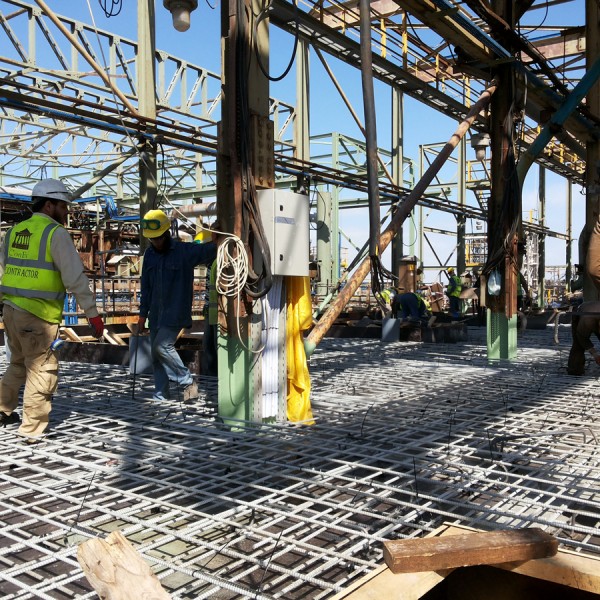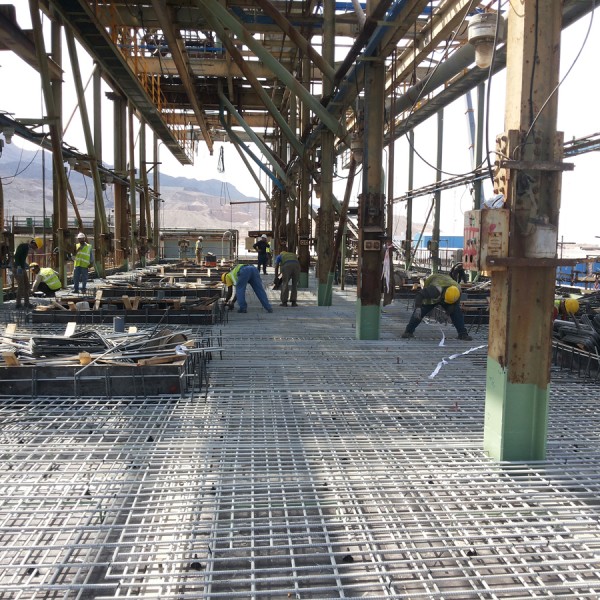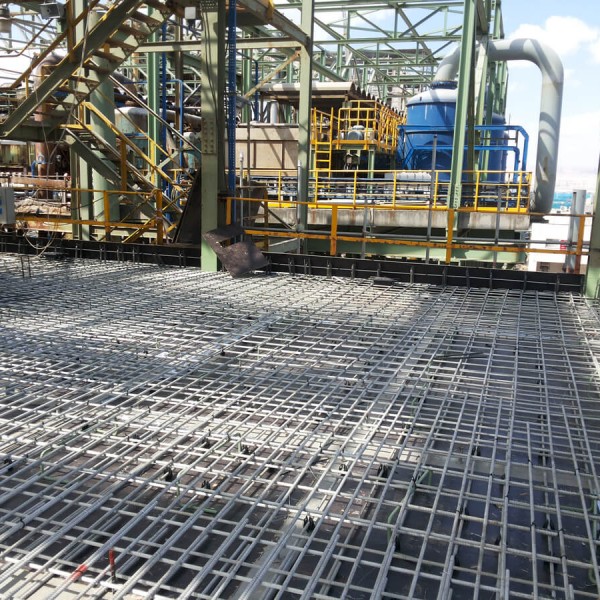The Carnallite Structure is an expansive, five-storey-high, open steel-framed structure constructed in the 1980s. An elevated concrete slab with steel framing to support multiple centrifuge machines. These are an integral part of the hot leach production line at this potash plant. The plant currently produces around 500,000t/y of potash.
Best structural design in chemically corrosive environments
The process of producing potash is a corrosive and high demand treatment. At the Ghor El Safi plant, high salinity salt water is pumped from the Dead Sea and fed into large solar ponds where the start of the concentration process takes place. The remaining brine is pumped to the carnallite ponds where it is precipitated to produce potash. The hot leach plant and cold crystallization plants are used to process the carnallite to produce potash.
The materials used to produce potash combined with the processes encourage advanced deterioration in concrete and supporting frames. Exposure to hot leach product (HLP) led to advanced deterioration of the concrete slab and supporting steel framing. This also led to early onset of corrosion on the concrete surface paste and embedded reinforcing steel. Supporting steel beams, columns, and bracing members also exhibited localized corrosion.
The consultants who specialize in challenging builds, were tasked with designing a replacement concrete slab capable of resisting the damaging effects of the HLP while being able to support the dynamic loads and vibration from the centrifuge machines. Measuring the response of the slab during centrifugal activity, estimating the amount of vibration the slab had to manage was required to understand the demands on the potash plant.
Providing structural longevity
Glass fiber-reinforced polymer (GFRP) rebar was used to provide the best life cycle outcomes. Mateenbar™ was selected to provide reinforcement for the concrete slab as it provides:
- high chemical resistance
- durability when exposed to chemicals, including chlorides and salts
- resistance to low levels of sustained and cyclic loading caused by the vibration of the centrifuge
- extended life cycle of at least 60 years, taking into account the extremely harsh environmental factors
- reduced maintenance cost and production delays.
Once installed, vibration performance of the Mateenbar™ reinforced concrete slab was measured and verified by dynamic sensors that were embedded in the slab.





